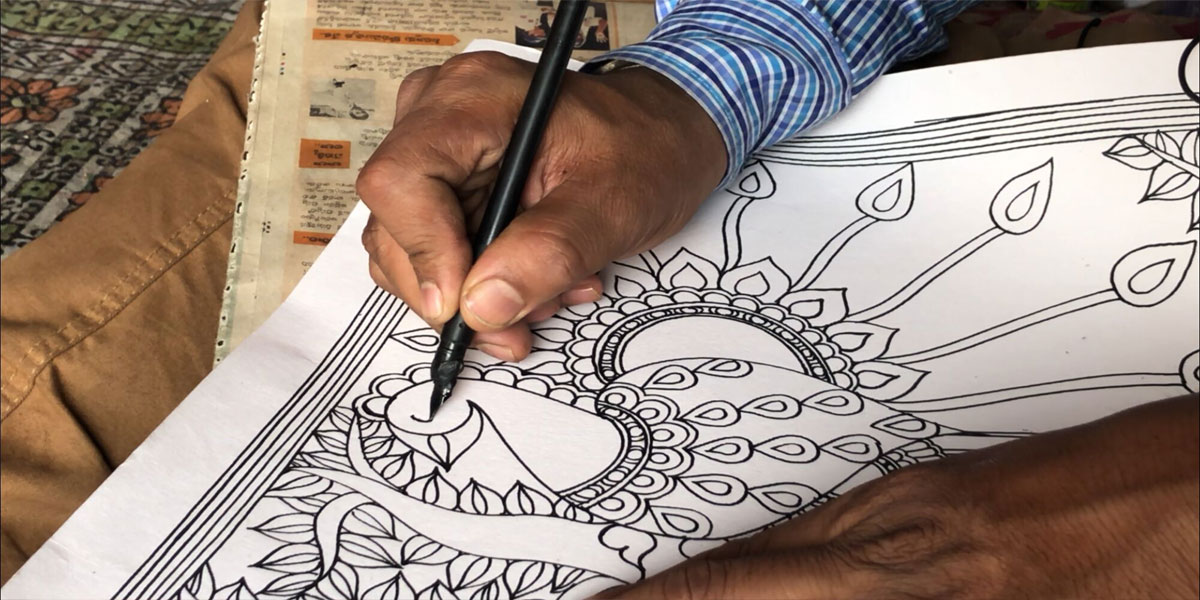Few patrons for Madhubani paintings in Shilparamam

The Madhubani artists at the All India Art and Craft fest in Shilparamam are probably the only ones who are fighting against all odds to keep alive the art In spite of decent footfalls, the artists are not able to sell enough arts
HiTec City: The Madhubani artists at the All India Art and Craft fest in Shilparamam are probably the only ones who are fighting against all odds to keep alive the art. In spite of decent footfalls, the artists are not able to sell enough arts.
The art form originally known as Mithila is a handmade painting that is painstakingly done. “It takes 15 days to paint one picture. “We choose colours according to the moods of the customers and their personalities,” said Rajesh, a Mithila painter. “There are only a few artists left in this field. We can hardly make three paintings in a month. Nowadays, people are not showing interest in paintings, and it is affecting our livelihood. The government should come forward and promote our art,” he added. “I love handmade paintings, and they have a good collection here. They are very rare these days, and I wish everyone understood the value of handmade painting, but there are few patrons for the art,” said, Anupama, a customer.
Mithila is named after the village Madhubani, a name that finds its origin in Indian epic Ramayana. ‘Madhubani Painting’ was first adopted by the court artists of King Janak of Videha, for the matrimonial ceremony of Sita, Janak's daughter. Since then, Madhubani has been a domestic art form of rural India, created by the women in the Mithila area. Mithila or Madhubani District is the actual hub of Madhubani paintings. Eventually, the art form spread to the adjacent districts of Madhubani like Rasidpur, Bacchi, Jetwarpur, Ranti, Rajangarh as well. The art was originally practiced by women, covering a wide variety of subjects from mundane to mythical. Following the belief that Gods visit each house in the morning, the art primarily donned the walls and doors and was intended to please the Gods.
Woman injured in stabbing attack in Tokyo, suspect at large
Bengal cop booked for murder over mysterious death of woman home guard, SIT to probe case
Staffer recalls horror of 7-kg gold robbery by armed gang in Karnataka’s Hunsur
25-Year-Old Airline Cabin Crew Member Dies At Gurugram Party; Police Begin Investigation















